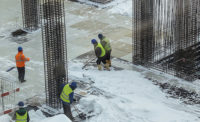When turnaround season comes to your facility, managers and turnaround personnel face a big dilemma: How do you successfully and safely complete the turnaround on a tight schedule?
The answer: Methodical preparation and planning in order to minimize risk and ensure the safety and reliability of both the plant and its personnel.
Turnaround hazards
Turnarounds (TARs) are not something that happen every day. As such, they are disruptive, complex and potentially more hazardous than ordinary, everyday plant operations. Here are a few reasons why:
- Potential issues with communication, planning, and scheduling
- Disruptions due to the phased shut-down of production units or the entire plant
- Employees may be asked to perform unfamiliar, specialized tasks
- Contractors are unfamiliar with plant employees or operations
- Production units must be brought online to full production
Communication & training
When you add unusual TAR issues to typical hazardous operating conditions present within every petrochemical plant, opportunities exist for potentially serious accidents. Difficulties with planning or logistics, coupled with temporary workers’ lack of familiarity with operations, can increase the likelihood that a turnaround or restart may involve an incident. To help prevent such an incident, ensure clear, consistent, and ongoing communication.
Make sure you’re continually providing definition and clarity. That means reiterating instructions, information, and guidelines. In fact, when it comes to issues of safety, there is no such thing as over communication.
The success of a TAR ultimately depends upon safely completing all tasks necessary to ensure plant operation at peak efficiency. Plant safety is everyone’s responsibility; every facility’s process and plant safety teams should be involved initially in planning, scheduling, and completion of TARs.
All the safety equipment in the world is useless if employees or contractors fail to understand how to use and maintain safety equipment properly. Here are some best practices:
- Develop and distribute an organizational chart
- Use a checklist to keep track of steps and tasks
- Pair new contractors with employee-mentors who have turnaround, equipment, and plant expertise
- Assign peer observers
- Mandate the use of spotters
- Stress the importance of reporting all safety incidents and close calls
Tools for the job
The tasks of a turnaround simply cannot get done without the proper equipment. That’s why safety managers must first determine whether the plant has the appropriate types of portable gas detectors, respirators, and fall protection — and has them in sufficient quantity — to support plant employees and contractors. Be sure to test, repair, and replace equipment as necessary, including:
- Inspecting fixed combustible gas detectors
- Evaluating flame-monitoring systems
- Checking portable gas detectors
- Reviewing breathing apparatuses
- Inventorying fall protection equipment
Finally, train, train, train. Employees and contractors must know how to use and maintain their personal protective equipment — especially when operating conditions are unusual.
Conclusion
There are huge advantages to integrating process control and plant safety functions: better hazard identification, coordinated plant safety procedures, joint equipment decisions, comprehensive training, incident reporting, and cost management just to name a few. Smart and solid planning is the key to a successful turnaround or restart.







